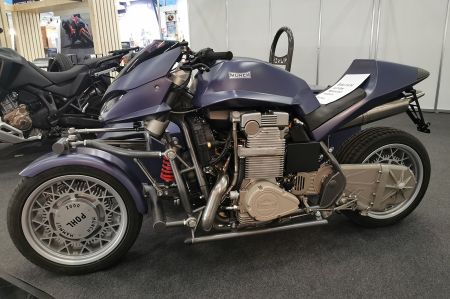Münch - motorcycle brand with a large fan community
- Written by Portal Editor
The short tour during the trade fair in Munich let us come across another special feature, because we came across a new vehicle from the Münch brand with a sidecar.
A tight-knit "Münch" club scene still ensures that not only the existing machines are maintained and cared for, but also that the name Friedel Münch once coined was preserved and continued to exist. Among the club members, purchase prices of around € 30,000 to € 50,000 are reached. It is considered indelicate among Münch drivers to offer a Münch for sale “just like that” without first offering a club member the opportunity to purchase it. Recently you can also have an original Münch-4 built. A company based in Lüneburg has been offering this opportunity for a number of years. The parts for this are manufactured according to the original design documents using the original materials.
Friedel Münch - an important name in the motorcycle industry
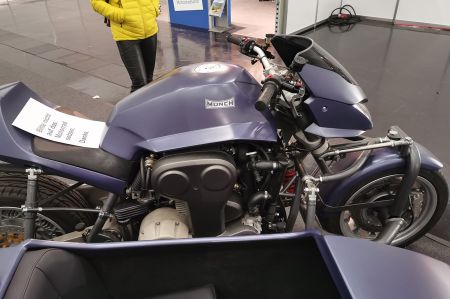 Before starting his own business, Friedel Münch was a designer at Horex, before he traded in motorcycles in Friedberg-Ossenheim, repaired engines and also worked in racing. At the end of the 1950s, racing driver Jean Murit contacted Münch, who was planning to build a motorcycle with a reliable engine and well-functioning brakes. Münch chose the air-cooled four-cylinder car engine from the NSU Prinz 1000 with a displacement of 1000 cm³, created the clutch and the gearbox from Horex components and manufactured the remaining parts of the motorcycle himself according to his own drawings. A number of parts were cast from the magnesium alloy Elektron: such as the rear wheel, the swing arm, the rear frame and the front wheel brake.
Before starting his own business, Friedel Münch was a designer at Horex, before he traded in motorcycles in Friedberg-Ossenheim, repaired engines and also worked in racing. At the end of the 1950s, racing driver Jean Murit contacted Münch, who was planning to build a motorcycle with a reliable engine and well-functioning brakes. Münch chose the air-cooled four-cylinder car engine from the NSU Prinz 1000 with a displacement of 1000 cm³, created the clutch and the gearbox from Horex components and manufactured the remaining parts of the motorcycle himself according to his own drawings. A number of parts were cast from the magnesium alloy Elektron: such as the rear wheel, the swing arm, the rear frame and the front wheel brake.
The extraordinary concept found a large fan base. The model should be named Mammut. But this name was protected by trademark law for Maschinenfabrik Berner & Co and so the model was officially called simply the TT (among enthusiasts, however, the name Mammut has survived to this day). Over the years, 1000, 1200 and 1300 cc models have been produced.
Münch was also successfully involved in racing. As a result of management errors and economic difficulties (low quantities, high production costs), however, the company was on the verge of bankruptcy several times. A collaboration with the American publisher and Münch enthusiast Floyd Clymer began in 1966. However, it did not last long, as commercial success failed to materialize, Clymer ran into health and financial difficulties and could not cope with Friedel Münch's technician mentality.
Financial support from business people
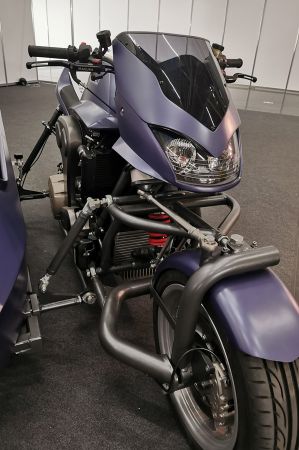 Clymer was followed in 1970 by the American George Bell, a millionaire's son, who built a new production site in Altenstadt-Waldsiedlung together with Münch. However, at the end of 1971, Bell separated from Münch KG for a short time due to a lack of economic success, which then had to file for bankruptcy.
Clymer was followed in 1970 by the American George Bell, a millionaire's son, who built a new production site in Altenstadt-Waldsiedlung together with Münch. However, at the end of 1971, Bell separated from Münch KG for a short time due to a lack of economic success, which then had to file for bankruptcy.
The company was taken over by the packaging manufacturer HASSIA Verpackungsmaschinen GmbH, who was interested in Münch's motorcycles. A new design with a three-cylinder, two-stroke engine was then presented to the public at the Cologne Salon, the Münch 3. However, this presentation was only moderately successful, and only two examples were built. Despite this, business with the previous four-cylinder concept was good and up to 30 Münch-4s were produced in a few months. Customers sometimes had to wait months for the ordered machine.
In 1973, the TTS-E came onto the market, the first production motorcycle with mechanical Kugelfischer fuel injection, as installed in Peugeot, Lancia and the BMW 2002 tii. With just under 74 kW (100 hp), the motorcycle reached a top speed of over 200 km/h (test value: 206.9 km/h) and accelerated to 100 km/h in 4.2 seconds. In 1973, the price of the TTS-E without accessories was 19,425 DM, which, taking inflation into account, currently corresponds to 32,900 euros. The new Japanese Big Bikes created strong and cheaper competition in the 1970s, so that sales figures fell.
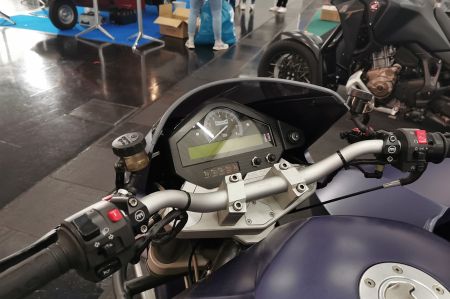 To save the company, Luigi Colani offered his help in 1972 and designed a Super-Münch with an aerodynamic fairing and handlebars that could be placed in boulevard and racing positions. The machine did not go into series production due to the tense economic situation. At the end of 1973, Hassia withdrew and Münch was again only able to file for bankruptcy.
To save the company, Luigi Colani offered his help in 1972 and designed a Super-Münch with an aerodynamic fairing and handlebars that could be placed in boulevard and racing positions. The machine did not go into series production due to the tense economic situation. At the end of 1973, Hassia withdrew and Münch was again only able to file for bankruptcy.
The bankrupt estate, including the rights to the name, was bought in 1974 by the wholesaler and Münch driver Heinz W. Henke, for whom Friedel Münch then worked as a technical manager. Production was geared towards the construction of individual one-offs. New models were not developed, but the existing models were revised and improved. In 1977, Münch separated from Henke and began to develop kits under the "Horex" brand, with which the cubic capacity of the Münch models could be increased to 1400 to 1800 cm³. Henke continued to build other Münch motorcycles up until the beginning of 1980, but these had nothing to do with the "Mammut".
Up until the 1990s, Friedel Münch allowed himself to be persuaded time and again to assemble new Münch-4s from individual parts.
Today it can only be admired in the technology museums
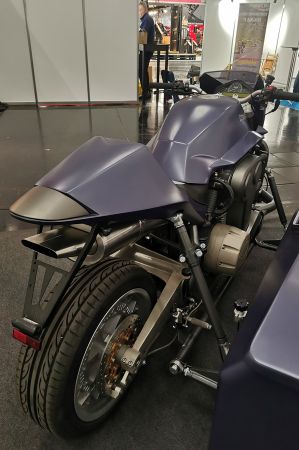 Most of the Münch motorcycles that are now in collections and museums, e.g. B. in the Speyer Technology Museum, date from after 1971. From then on, the production of the Münch 4 began in "larger" quantities. The early models from late 1966 to late 1970 have become very rare and not all are available.
Most of the Münch motorcycles that are now in collections and museums, e.g. B. in the Speyer Technology Museum, date from after 1971. From then on, the production of the Münch 4 began in "larger" quantities. The early models from late 1966 to late 1970 have become very rare and not all are available.
In order to give collectors and museums the opportunity to show these early Münchs in their collections for chronological presentation, e.g. since 2003 in Krautheim (Jagst) in Baden-Württemberg these early Münch motorcycles have been manufactured as historically correct replicas. Research into these exact replicas took over two years. A few contemporary witnesses could be found who were able to support the details of the research with historical image material. Friedel Münch also contributed a great deal of knowledge and information. The construction of these replicas made it possible to present these important early motorcycles in the Münch history to posterity. Münch examined the work of the manufacturer of the replicas and accepted them.
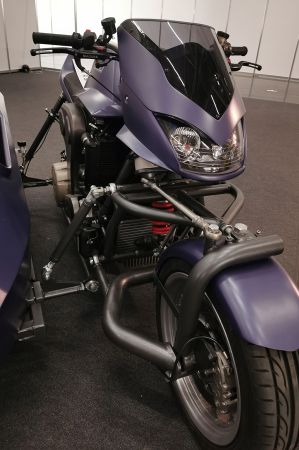 In 1997, on the initiative of the Würzburg businessman and new Münch brand owner Thomas Petsch, a completely new model was to be developed and built as the most powerful production motorcycle in the world in a small series of 250 for wealthy enthusiasts: the Mammut 2000. Münch Motorrad Technik GmbH was founded for this purpose.
In 1997, on the initiative of the Würzburg businessman and new Münch brand owner Thomas Petsch, a completely new model was to be developed and built as the most powerful production motorcycle in the world in a small series of 250 for wealthy enthusiasts: the Mammut 2000. Münch Motorrad Technik GmbH was founded for this purpose.
Due to significant problems in the design and manufacture of the components, the delivery originally planned for 2000 was delayed until 2002. After eight machines had been delivered, the project was stopped in mid-2002. Just 15 Münch Mammut 2000 were built at Sachs Fahrzeug- und Motorentechnik GmbH in Nuremberg. Since the calculated manufacturing costs far exceeded the purchase price of €86,000 and cost-covering production was not possible, production was discontinued.
Electric motorcycles Münch TTE2: Start in Oschersleben 2012
Between 2008 and 2012, Petsch and his team of designers developed the electrically powered Münch TTE-1 street racing motorcycles and the successor model, the TTE-2. On the TTE-2 machine, his Münch Racing GmbH with drivers Matthias Himmelmann and Katja Poensgen won several world championship titles in the driver and constructor ratings of the two international road racing championships for electrically powered motorcycles, the TTXGP The eGrandPrix and the FIM e-Power International Championship of the Fédération Internationale de Motocyclisme.
Please read as well:
Geiseltalsee - hundreds of years of coal mining - today tourism
